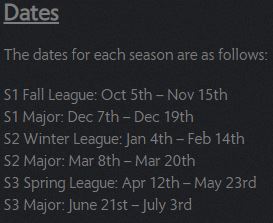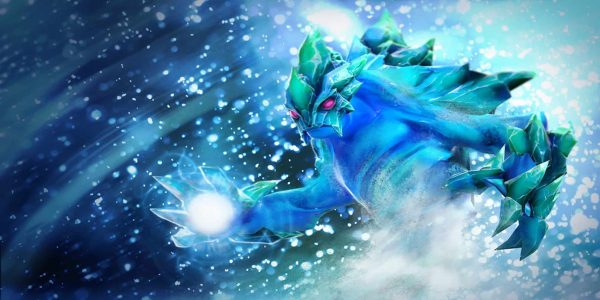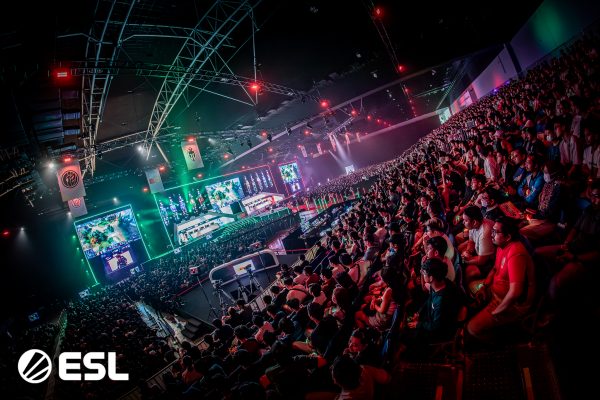On Wednesday, Valve announced a radical series of changes to the Dota Pro Circuit. In a Tweet and accompanying blog post, the Dota 2 developer outlined the changes to the landscape of professional play after The International 2020.
The Regional League system for the DPC has many excited, but it's essential to look at just what we stand to lose with these changes. (Photo courtesy Valve)
The main change consists of a shift away from the current touring format into a more regimented league system. Teams will now compete in either the Upper or Lower Division of a league in each region. Each league will have three seasons being held per year before The International. At the end of each season, a Major will be held, shrinking the total number of these events from five to just three.
While some have heralded the new league system as a welcome change to the DPC, it’s worth considering what will be lost by transitioning to this new format. While many elements of the situation facilitate a much more robust system, especially for tier two and tier three teams, some of the most significant changes could justifiably be seen as a massive downgrade for all involved. From organizations and competitors to tournament organizers and fans, many stand to lose out from this new league format.
What the Players Lose
Players are the life and soul of a game. When a game dies, it’s because the players are gone. What keeps an esports title alive is a scene that pushes people to get to the top. Dota has faced numerous criticisms for its lackluster tier two and tier three scenes. The lack of incentives or events for smaller teams has stopped the next generations of talent from developing. This new league system, with its prize money all the way down to the second division, looks like it could be the difference-maker for players of all levels.
When it’s all written down on paper, the winnings from this new league format seem high and, sure, it’s definitely something to get excited about. But it only takes into account the teams that are consistently performing to the highest level. As you get down to the lower levels, the prize money seems almost negligible, especially in regions like Europe and North America.
The most confusing aspect about these figures is people’s positive response to them. None of the prize money seems to be valued at the same level as a current Minor, and it’s even more spread out. A player on the winning team each season gets $6,000. Which sounds good for a month and a half’s work, until you factor in the training schedules an organization will need to maintain to play at a top-level, three times a week, each season.
But beyond money, players need a good environment to play the game in. One of the great advantages of the current system is the ability for top teams to take breaks. It prevents burnout, lets some of the lower tier teams to grab a few DPC victories, and otherwise keeps things fresh. This league system potentially robs players of any chance to take an extended break, because there are far less chances to qualify for TI and gain DPC points, or even just make money at events.

At the top end of Dota 2, there are literal millionaires, who are still playing just to try and win TI. They know they can get to a TI with a good performance at one, maybe two tournaments. Or if all else fails, through open qualifiers. This new system takes that away. No more open qualifiers for TI or part-time players. No more 2018 OG running the gauntlet and winning the Aegis. You’re all in, playing, and winning ten and a half months of the year, or you’ve got no chance.
At some point, when you’re a successful pro, you’ve got to play pubs eight hours a day, then scrim, then team meeting, etc. This before playing three league matches a week, your competitive fire is going to burn out real quick.
We’ve seen some of the best players in Dota 2 step down due to the intense schedule required to try and win at TI. There are players like Anathan “ana” Pham or Yeik “MidOne” Nai Zheng who’ve talked continuously about burnout in interviews for several years. This new league environment will no doubt exacerbate this problem.
Goodbye Small Tournament Organizers
The dismantling of the existing DPC system is a considerable blow to tournament organizers who’ve sustained the scene for over a decade. With the number of Majors reduced to just three and no official Minors, TOs are left to pick up the pieces of a now destroyed calendar of events. While the initial document reasonably describes that third-party events are free to be held outside the confines of the league, realistically, it all but scuppers any chance for these tournaments to be held.
Expecting that teams will want to attend events in the two-week breaks between seasons end and Majors, or even between the Majors’ end and the start of the next season, is fantasy. Squeezing travel, boot camps, and participating in a tournament into that time period is ludicrous for any team. Even in the two-month break after TI, the window is so small that it’s hard to imagine any organization wanting to spend one of its eight weeks of non-league time playing in yet another tournament.
This isn’t a baseless concern either. This is purely history repeating itself. Thanks to League of Legends transferring to their current league system in 2013, we have an example of a large scale MOBA transitioning to a league system. What it meant for independent tournaments was simple – complete destruction.
Although several tournament organizers attempted to work alongside the newly created leagues, such as MLG’s hosting of several weeks of NA LCS in 2013 and 2014, ultimately, the league format was a death sentence for independent TOs of that game. Outside of the occasional Twitch Rivals event, the official leagues are the only competitive scene that LoL has, which in itself contains franchised leagues with a multi-million dollar buy-in prices. Not something the Dota scene eagerly wants.
This is especially tragic to think about when we’ve seen a plethora of incredible minor and independent tournaments this season. The likes of WePlay! and ONE Esports have both held several events with excellent production values. Under this new system, they’ll likely be starved out.
A Loss of International Competition
The unfavorable lessons which we can learn from League of Legends don’t end at just the death of independent tournaments.
One of the biggest problems LoL has is that it’s very weak in international competition. Teams from around the world just don’t compete against each other on a regular basis. They meet at two tournaments a year and then go back to their echo chamber for six months. While this new format is nowhere near as extreme as that, it still reduces the number of official international events prior to The International from ten to just three.
Good luck if you’re not Europe and China under this system, or one of the very best teams in your region because you’re just not going to be facing top teams ever.
In a Tweet posted in response to the new league system, beastcoast team manager Vitória “Guashineen” Otero explained how the existing system had driven her squad’s development, and how the new system would prevent that from happening again.
“[The new system] takes away all the international experience that helped my team, for example, to grow,” Guashineen continued. “It’s cool for tiers 2-3, but the feeling I have is that it will have the money, but it won’t evolve, literally as it happens in LoL. A team that beats the regional teams to go straight to the playoffs is a team unprepared at the international level.”
Ultimately this becomes an issue on several levels. How can this system have international competitive integrity, when you’re operating with any concept of how good you are relative to teams in other regions? If teams aren’t tested until a Major or The International, the standard of play is going to fall. When the games being played don’t mean anything in the grand scheme of things, the fans, the players, and all involved are going to lose out. Taking away international competition to protect smaller regions won’t help them grow, it’ll stunt their development.
So What Does This Mean?
For years Dota flourished under the benign neglect of its creator to it’s esports scene. The company’s laissez-faire attitude to a seasonal structure and the numerous attempted changes it implemented over the years have finally culminated in this attempt at a rigid league format. All signs seem to suggest that it’s done this for one of two cynical reasons.
The first would be a naive attempt to fix the current problems in the DPC with a radical restructuring when only tweaks were needed. Rumblings about a lack of support for the tier two scene, criticism of the lack of allocations of spots at Majors, and other critiques have all been addressed in the new format. The tier two Dota scene gets consistent prize money, and the Major spots are now better weighted towards the better regions. But in making these changes, they’ve damaged so many other elements of the scene.
The second, more sinister suggestion, would be that after a decade of leaving it well alone, Valve has taken the example of their contemporaries at Riot Games and Activision Blizzard. They want a more hands-on, controlling system for their game’s esports scene. By creating a league system, Valve has laid the foundation for the likes of franchising, greater sponsorship opportunities, and even more crowd-funded prize pools.
Whatever the reasoning though, the new Regional League system is set to leave us without so many of the aspects of the professional Dota 2 scene that we know and love. Dota 2 is an ever-changing and evolving game, but it would be sad to see it change into something we no longer recognize.

